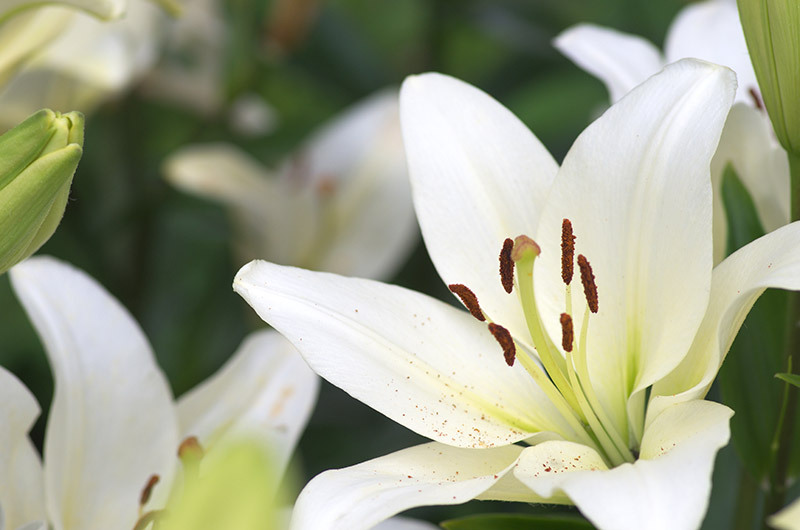Boost the Lifespan of Poinsettias
Posted on 16/08/2025
Boost the Lifespan of Poinsettias: Expert Tips for Prolonging Their Beauty
Poinsettias are synonymous with the festive season. Their vibrant red, white, or pink bracts and lush green leaves bring cheer to homes during the holidays. However, many people struggle to maintain the vitality of their poinsettias beyond the holiday season. By following the right care techniques, you can boost the lifespan of poinsettias and enjoy their beauty for months, or even years. In this comprehensive guide, you'll discover creative, practical, and science-backed tips to help your poinsettias thrive well past December 25th.

Understanding Poinsettias: A Quick Overview
Poinsettias (Euphorbia pulcherrima) are native to Mexico and Central America. Traditionally associated with Christmas, these flamboyant plants are actually perennials in their natural habitat. With the right conditions, you can extend the lifespan of your poinsettia and even encourage it to bloom again year after year.
Why Do Poinsettias Wilt After the Holidays?
- Poor watering practices (over or underwatering)
- Improper lighting conditions
- Temperature fluctuations and cold drafts
- Lack of humidity
- Incorrect repotting or soil mix
By learning how to avoid these common pitfalls, you can ensure your poinsettia lives its healthiest, longest life.
Poinsettia Care: How to Prolong Its Lifespan
1. Choose the Healthiest Plant
Start right by selecting a healthy poinsettia from the nursery or garden center:
- Check for vibrant leaves and bracts, with no yellowing, wilting, or spots.
- Avoid plants with droopy or faded foliage.
- Look for strong stems and a dense growth habit.
Your initial vigilance will pay off, as healthy plants have a greater chance of surviving and even thriving well after the holidays.
2. Provide Optimal Light Conditions
Poinsettias love bright, indirect sunlight. Place them in a south, east, or west-facing window where they can receive at least 6 hours of light each day.
- Avoid direct sun that can scorch the leaves.
- If natural light is limited, supplement with a grow light for a few hours each day.
Insufficient light leads to leggy growth and leaf drop--common reasons why poinsettias decline prematurely.
3. Water with Precision
One of the most common mistakes with poinsettias is improper watering. Here's how to get it right and boost your poinsettia's lifespan:
- Water thoroughly when the soil surface feels dry to the touch.
- Ensure water drains freely from the pot--never let the plant sit in standing water as this leads to root rot.
- Avoid letting the soil completely dry out; this can cause sudden leaf drop.
- Reduce watering slightly after the bracts have faded, but never allow the roots to desiccate.
Tip: If your poinsettia is wrapped in decorative foil, punch holes in the bottom or remove it during watering to prevent waterlogging.
4. Maintain Ideal Temperature and Humidity
Poinsettias thrive in indoor temperatures between 65-75?F (18-24?C) during the day and prefer slightly cooler nights, down to 60?F (15?C).
- Avoid exposing your poinsettia to cold drafts, sudden temperature changes, or heat sources (like radiators and heating vents).
- Boost humidity around your plant with a pebble tray or regular misting, especially in dry winter indoor air.
5. Feed Your Poinsettia
Fertilizing is essential for poinsettias you want to keep growing past the holidays:
- Feed monthly with a balanced, water-soluble fertilizer starting in late winter or early spring when growth resumes.
- Stop fertilizing while the plant is in bloom; begin once it starts developing new green shoots.
Nutrient-poor soil can reduce the flowering potential and lifespan of poinsettias, while the right fertilizer supports robust growth and future blooms.
6. Pruning and Rejuvenating Your Poinsettia
Proper pruning is vital to keep your poinsettia compact, bushy, and ready to rebloom:
- After the bracts have faded in late winter or early spring, cut the plant back to about 6 inches high.
- Continue to prune the new shoots by pinching back the stems in spring and summer to encourage branching and fullness.
- Remove any dead or yellowing leaves regularly to prevent disease.
This technique not only promotes lush foliage but also increases your poinsettia's longevity and overall health.
7. Repotting: Give Your Poinsettia Room to Grow
Once spring arrives and all danger of frost has passed, consider repotting your poinsettia:
- Choose a pot that is 1-2 inches larger in diameter than the current pot.
- Use a well-draining, sterile potting mix.
- Transplant gently to avoid root damage.
Repotting boosts the vitality and growth of your poinsettia, setting the stage for a robust plant in the coming seasons.
8. Summer Care: Moving Poinsettias Outdoors
Did you know you can set your poinsettia outside during the warm months? Here's how to prolong the lifespan of your poinsettia by giving it a summer vacation:
- Gradually acclimate the plant to outdoor conditions each spring.
- Place it in a semi-shaded spot, away from direct midday sun.
- Water and fertilize regularly throughout summer growth.
- Pinch back new growth in early July and late August to promote bushiness.
Always bring your plant back inside before night temperatures dip below 55?F (13?C).
9. Encouraging Re-bloom: The Secret of Light and Darkness
For those aiming to make their poinsettia bloom again for the holiday season, understanding the plant's photoperiodism is crucial. Poinsettias are short-day plants--they require extended periods of darkness to develop their vibrant bracts:
- Starting in late September or early October, give your plant 14-16 hours of total darkness each night for about eight weeks.
- During the day, provide bright, indirect light as usual.
- Cover the plant or move it into a dark closet, ensuring no stray light interrupts its nighttime darkness.
After about two months, your poinsettia should develop colorful bracts, ready to display for the festive season!
Common Poinsettia Problems and Solutions
Yellowing Leaves
- Cause: Overwatering, underwatering, or sudden temperature changes
- Solution: Check watering practices, relocate the plant away from drafts, and stabilize room temperature
Dropping Bracts and Leaves
- Cause: Insufficient light, overwatering, or exposure to cold
- Solution: Move closer to a light source, reduce watering, or move away from cold windows and doors
Wilting
- Cause: Water stress (either too much or too little)
- Solution: Ensure the soil is consistently moist but not soggy; check the drainage
Pests (Whiteflies, Spider Mites, Aphids)
- Cause: Dry air, weakened plant immunity
- Solution: Increase humidity, wipe leaves regularly, treat with insecticidal soap if needed
Frequently Asked Questions About Poinsettia Lifespan
How long do poinsettias typically live indoors?
With proper care, a poinsettia can live for years. Most store-bought plants are kept as annuals, but there's no reason you can't prolong the lifespan of your poinsettia indefinitely with the right attention.
Can I plant my poinsettia outside?
In frost-free climates, poinsettias can be grown as outdoor perennials. In colder climates, enjoy them outdoors during summer, but bring them indoors before autumn's chill sets in.
How do I make my poinsettia turn red again?
Colorful poinsettia bracts are triggered by long nights and short days. Follow a strict light/dark schedule in autumn (as detailed earlier) to encourage re-blooming and vibrant color for the holidays.
Creative Ideas for Long-Lasting Poinsettias
- Create a vibrant centerpiece by placing your poinsettia in a decorative pot with moss or stones around the base.
- Mix with other houseplants for an eye-popping indoor garden--synergize textures and colors for a year-round display.
- Gift a rebloomed poinsettia to friends and family--it's a living symbol of your care and expertise!
Sustainability and Environmental Benefits of Prolonging Poinsettias
Keeping your poinsettia alive year after year isn't just rewarding--it's eco-friendly too:
- Reduces waste: Fewer discarded plants mean less landfill waste after the holidays.
- Conserves resources: Growing your own poinsettia reduces the need for new production, packaging, and transportation impacts.
- Encourages sustainable gardening: Inspires practices that protect pollinators and reduce pesticide use.

Summary: Key Steps to Boost the Lifespan of Poinsettias
- Select healthy plants to start off right.
- Provide indirect sunlight for 6+ hours daily.
- Water carefully; keep soil consistently moist but not soggy.
- Maintain proper temperature and humidity indoors.
- Fertilize regularly once blooming finishes.
- Prune and repot annually for bushy growth.
- Use summer outdoors and a strict light/dark schedule to re-bloom.
- Troubleshoot problems early to ensure plant health.
Final Thoughts: Growing Your Poinsettia Legacy
With a little patience and know-how, you can boost the lifespan of your poinsettia and keep this dazzling plant as a cherished part of your home. Not only will you extend the plant's beauty, but you'll also deepen your connection to nature and the seasons. Follow these expert strategies, and your poinsettias will shine brightly--long after the last holiday ornament has been packed away.
Start your poinsettia care journey today, and transform your holiday plant into a thriving part of your indoor garden for years to come!
Latest Posts
Year-Round Hydrangea Care: Keeping Them Radiant
Chic Office Plant Options for the Time-Strapped
Keeping Your Orchids Happy and Healthy






